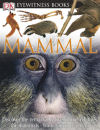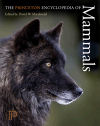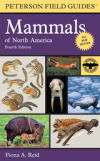


Official State Endemic Mammals
| Official endemic mammals listed by state. (List by state or year). | |||
State |
Name | Designated as | Year |
|---|---|---|---|
| Alabama | [ None ] | ||
| Alaska | [ None ] | ||
| Arizona | [ None ] | ||
| Arkansas | [ None ] | ||
| California | [ None ] | ||
| Colorado | [ None ] | ||
| Connecticut | [ None ] | ||
| Delaware | [ None ] | ||
| Florida | [ None ] | ||
| Georgia | [ None ] | ||
| Hawaii | [ None ] | ||
| Idaho | [ None ] | ||
| Illinois | [ None ] | ||
| Indiana | [ None ] | ||
| Iowa | [ None ] | ||
| Kansas | [ None ] | ||
| Kentucky | [ None ] | ||
| Louisiana | [ None ] | ||
| Maine | [ None ] | ||
| Maryland | [ None ] | ||
| Massachusetts | [ None ] | ||
| Michigan | [ None ] | ||
| Minnesota | [ None ] | ||
| Mississippi | [ None ] | ||
| Missouri | [ None ] | ||
| Montana | [ None ] | ||
| Nebraska | [ None ] | ||
| Nevada | [ None ] | ||
| New Hampshire | [ None ] | ||
| New Jersey | [ None ] | ||
| New Mexico | [ None ] | ||
| New York | [ None ] | ||
| North Carolina | [ None ] | ||
| North Dakota | [ None ] | ||
| Ohio | [ None ] | ||
| Oklahoma | [ None ] | ||
| Oregon | [ None ] | ||
| Pennsylvania | [ None ] | ||
| Rhode Island | [ None ] | ||
| South Carolina | [ None ] | ||
| South Dakota | [ None ] | ||
| Tennessee | [ None ] | ||
| Texas | [ None ] | ||
| Utah | [ None ] | ||
| Vermont | [ None ] | ||
| Virginia | [ None ] | ||
| Washington | Olympic marmot | Official endemic mammal of the state of Washington | 2009 |
| West Virginia | [ None ] | ||
| Wisconsin | [ None ] | ||
| Wyoming | [ None ] | ||
 Mammal Steve Parker Mammal, by Steve Parker. 72 pages. Publisher: DK Publishing, Inc. (August 2, 2004) Reading level: Ages 8+. Here is a spectacular and informative guide to the natural world of mammals. Stunning real-life photographs of bushbabies, badgers, wallabies and more offer a unique "eyewitness" view of the natural history of mammal behavior and anatomy. See how newborn mice develop, what the inside of a molehill looks like, what a whale has inside its mouth, how a chinchilla keeps its fur clean, and the only mammals that can fly. Learn how to recognize mammal footprints, why some animals store food in their cheek pouches, why you are a mammal, and how the porcupine frightens its enemies. Discover how camels can walk on sand, what mammals looked like in the Ice Age, why some mammals have spines instead of fur, what whiskers are for, why a wallaby has a pouch, and much, much more! |
|||

The Princeton Encyclopedia of Mammals, edited by David W. Macdonald. 976 pages. Publisher: Princeton University Press (February 9, 2009) The Princeton Encyclopedia of Mammals is the most comprehensive and accessible reference book on mammals available. Unsurpassed in scope and stunningly illustrated, this book covers every known living species, from aardvarks to zorros. The informative and lively text is written by acclaimed researchers from around the world and features a concise general introduction to mammals followed by detailed accounts of species and groups that systematically describe form, distribution, behavior, status, conservation, and more. There are superb full-color photos and illustrations on virtually every page that show the animals in their natural settings and highlight their typical behaviors. And throughout the book, numerous "Factfile" panels with color distribution maps and scale drawings provide at-a-glance overviews of key data. The Princeton Encyclopedia of Mammals is the definitive one-volume resource--a must-have reference book for naturalists and a delight for general readers. |
|||
 Mammals of North America Fiona Reid Mammals of North America: Fourth Edition (Peterson Field Guides), by Fiona Reid. 608 pages. Publisher: Houghton Mifflin Harcourt; Fourth Edition edition (November 15, 2006) A Field Guide to Mammals of North America: The most comprehensive, in-depth, and current guide to North American mammals, this book covers all the mammals found in North America north of Mexico, including those that live in near-shore waters. The only guide to include paintings and photographs of the animals as well as photographs of mammal skulls, it has 80 color plates, plus 46 additional color illustrations and black-and-white drawings, nearly 400 range maps, and more than 100 color photographs. |
|||
~~ OUR PARTNERS ~~
[ HOME
| LINK TO NETSTATE
| GUESTBOOK
]
[ SPONSORSHIPS/ADVERTISING
| PRIVACY STATEMENT
| CONTACT US
]
Site designed exclusively for NETSTATE.COM by NSTATE, LLC

NETSTATE.COM is a Trademark of NSTATE, LLC.
Copyright © by NSTATE, LLC. All rights reserved.
No copyright is claimed on non-original or licensed material.
Support NETSTATE
